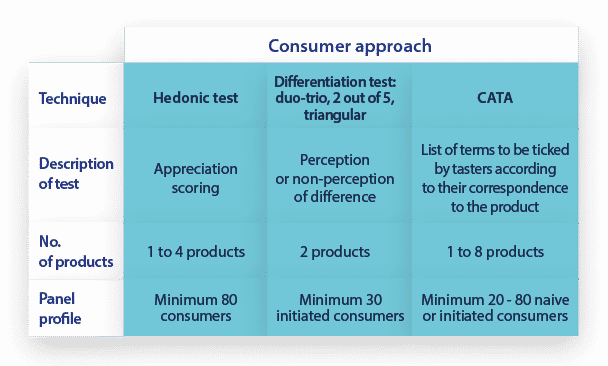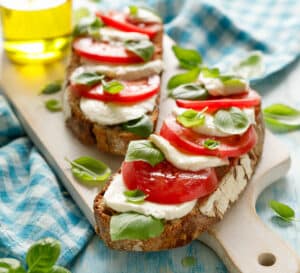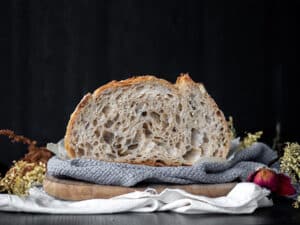In order to satisfy consumers’ expectations of bakery goods and anticipate developments in market demands, sensory analysis as a science is placed at the baker’s disposal and permits a qualitative approach.
This article takes a look at the analytical methods based on the assessment capabilities of a consumers’ panel, as opposed to protocols relying upon experienced or expert panellists

Hedonic or assessment test
The consumer test reserved for ‘naive’ consumers is the most commonly used method. It is based on factors relating to the product’s assessment (by means of a scale) and generally on the consumer’s repeat purchase intentions.
Differentiation test
Differentiation tests may be used to measure whether a difference is perceptible between the existing products.
- duo-trio: each panellist is presented with three products from two batches, one of them being marked as the control. The panellist is tasked with finding the one that matches the control out of the remaining two products.
- 2 out of 5: each panellist is presented with two identical products and three different ones and is asked to identify the two that are identical.
- triangular test (the most commonly used method – Standard ISO 4120, 2004): three products, two of which are identical, are presented to the panellist. Six presentation combinations are possible and distributed randomly among the panellists. The panellist is required to identify the product that is different.
CATA (Check-All-That-Apply)
The CATA method is especially worthwhile for the study of new products, outside the usual product’s universe, or even to obtain a quick, objective description of the products (Adams et al., 2007; Valentin et al., 2012).
The CATA analysis proceeds in two stages: a questionnaire is handed to each panellist. The panellists are asked to attribute descriptors to each product, then proceed to a factorial analysis of the results in order to obtain a map of the products’ relative positioning among those products tested.
Cross-referencing between the consumer and expert approaches helps to build a preference map (Risvik et al., 1994) and thus better understand and appreciate the consumers’ choices. It is a combination of these methods that helps to define the organoleptic characteristics of a product adapted to a certain target. In this sense, the baker is compelled to consider sensory analysis as a development tool in its own right.




